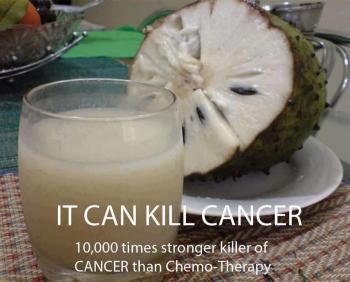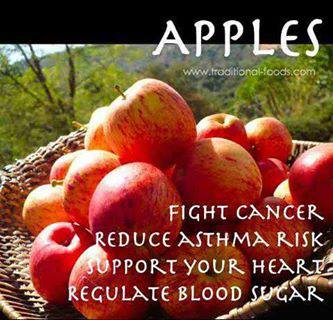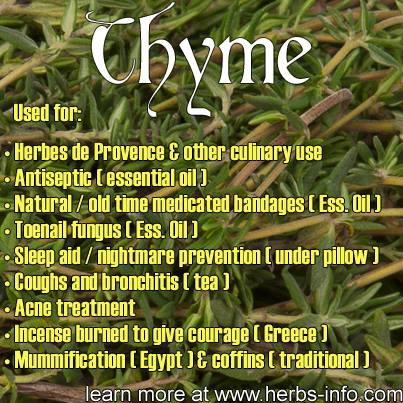A scientific research published in the Journal of Natural Products in 1996, stated that a certain compound from the seed is selectively cytotoxic to colon adenocarcinoma cells (HT-29) in which it was 10,000 times the potency of Adriamycin (the commonly used chemotherapy drug).
Protect your immune system and avoid deadly infections. Feel stronger and healthier throughout the course of the treatment. Boost your energy and improve your outlook on life.
The source of this information is just as stunning.
Extracts from the tree were shown to: Effectively target and kill malignant cells in 12 types of cancer, including colon, breast, prostate, lung and pancreatic cancer.
What’s more, unlike chemotherapy, laboratory tests shows that the compound extracted from the Guyabano tree selectively hunts down and kills only cancer cells. It does not harm healthy cells! Various parts of the tree–including the bark, leaves, roots, fruit and fruit-seeds–have been used for centuries by medicine men and native Indians in South America to treat heart disease, asthma, liver problems and arthritis.
The results showed that Guyabano’s “leaves and stems were found effective in attacking and destroying malignant cells.
In many independent laboratory tests has proven that Guyabano to be a potent cancer killer.
The most significant part of the report is that Guyabano (Annona Muricata) was shown to selectively target the cancer cells, leaving healthy cells untouched. Unlike chemotherapy, which indiscriminately targets all actively reproducing cells (such as stomach and hair cells), causing the often devastating side effects of nausea and hair loss in cancer patients.
A study at Purdue University found that the leaves from the Guyabano tree killed cancer cells among six human cell lines and were especially effective against prostate, pancreatic and lung cancers.
GUYABANO RESEARCH
For a long time the fruit, leaves and bark from the tropical Guyabano tree have been used as a natural medicine for many illnesses. And now it also seems to be a natural cancer cell killer.
The Guyabano Tree
The Guyabano tree (latin name: Annona muricata) is a low-branching and bushy but slender tree, which can reach a height of 7.5-9 m. The large evergreen leaves are smooth and glossy and have a dark green upper surface. The fruits are usually oval or heart-shaped and 10-30 cm long and up to 15 cm in width. The skin of the fruit is leathery and covered with curved, soft, pliable spines. When the tips of these spines can break off easily, then the fruit is ripe enough to eat. The inside of the fruit is cream-colored and is divided into segments. Closely-packed segments are seedless and other segments have a single oval, smooth, hard black seed. One piece of large fruit can contain a dozen to 200 seeds or even more.
It tastes slightly acidic and it is used as food in different ways. For example you can spoon the flesh out or make sherbets and drinks out of it. From the leaves you can make tea.
The Guyabano tree is a tropical tree found in the warmest tropical areas in North and South America, in the Amazon and in Asia.
Natural Medicine
The bark, leaves, fruit, roots, and fruit seeds of the Guyabano tree know a long history of many medicinal uses.
– The fruit and juice is used against worms and parasites, to cool down fevers, to increase mother’s milk after childbirth. It can also be used for diarrhea or inflammation in the bowels as a drying agent.
– The seeds can be crushed and then used against internal or external parasites, head lice, and worms.
– The leaves are used as a sedative and a soporific (inducer of sleep) in the West Indies and Peruvian Andes when drank as a tea. This infusion is also used to relief pain or for antispasmodic purposes. For liver problems a leaf tea is used in the Brazilian Amazon.
– The roots and bark can be of aid for diabetes, but can also be used as a sedative.
As you can see there are many uses of the Guyabano tree. These are just a few ways how the Guyabano tree can be of aid in your health. Next to all of these uses, it now also seems to help against cancer. Research has found many biologically active compounds in the Guyabano tree, and one of these compounds is able to destroy cancer cells.
The Cure for Cancer Lies in a Tree
The Guyabano tree consists of many chemicals, but what makes the Guyabano tree special is that this tree contains a natural compound named ‘acetogenins’. Research has found that this compound can slow the growth of tumor cells and be toxic to tumor cells without harming healthy cells. Especially the latter is a problem of recent anticancer drugs. Chemotherapy kills growing cells, bad (the cancer cells) and good (the healthy cells). The best cure for cancer is a product that can target only the cancer cells. And this is just exactly what the natural compound found in the Guyabano tree does.
The tree produces these ‘acetogenins’ in the leaves, stem and bark. What you can do is drink the extracts of the tree and this will help you fight against cancer.
Chemical Compound
What everyone would like is to make these acetogenins in big quantities, to help everyone. However, the natural ‘acetogenins’ are very complex in structure and is not easily to make by chemists. To make it easier to produce large amounts of this medicine, research has been done to find the active parts of the compound against cancer. If the active parts can be found, the medicine would be easier to produce and be more available to everyone. Unfortunately, scientists have not been able to find the active parts of the Guyabano tree.
Until then, you can turn to the natural acetogenins and drink the tea, juice or use the supplements.
How does it work?
Oberlies et al (1995) researched the capability of acetogenins to block, or inhibit, the cell growth of tumor cells. They tested this on several cell types in vitro; cancerous cells from mice and humans as well as non-cancerous cells from the intestinal tract of rats. Results showed that the more acetogenins was added with the cancerous cells, the more the cell growth was blocked. In addition, the non-cancerous healthy cells were not affected by the acetogenins and the cell growth was not blocked. These findings can indicate that acetogenins can selectively block the cell growth of tumor cells, while the healthy cells remain unaffected with minimal toxicity by this compound.
In breast cancer the cancer gene ‘epidermal growth factor receptor’ (EGFR) is frequently overexpressed. Therefore, this cancer gene is a possible target for breast cancer therapy. A study by Dai et al (2011) used a Guyabano fruit extract and the extract inhibited or blocked the expression of the EGFR gene and this resulted in an inhibition of 32% of the growth of breast cancer cells. The non-cancerous breast cells were not affected by the fruit extract.
In 1997 Oberlies et al researched the ability of the acetogenins to block the cell growth of specific tumor cells, adriamycin resistant human mammary adenocarcinoma cells. These breast tumor cells are resistant to treatment with adriamycin, vincristine and vinblastine. All three are anti-tumor drugs. Because these tumor cells can not be treated with the drugs, the tumor is called multidrug resistant (MDR). The research group used various acetogenins derived from the Guyabano. The ones with a specific structure (a stereochemistry of threo-trans-threo-trans-erythro) were the most potent acetogenin and had 250 times the potency of adriamycin. This indicates that acetogenins may have a chemotherapeutical potential, also against MDR tumors.
Not only a “cancer cell killer”
Besides being helpful to fight against cancer, Guyabano can also help with other conditions and diseases.
Diabetes Mellitus
Diabetes mellitus is a metabolic disorder where the patient remains to have high blood sugar levels because the body is not able to produce insulin (type 1 diabetes), or the (pancreatic) cells in the body does not react to the produced insulin (type 2 diabetes).Adeyemi et al (2010) studied the effects of the extracts of Guyabano on diabetes mellitus. Thirty rats were divided in three groups; a control group, a group of rats with induced diabetes and a group of rats with induced diabetes and treatment of Guyabano extracts. After the treatment the pancreatic cells were examined and the group treated with Guyabano resulted in more pancreatic cells compared to the untreated group. These results suggest that Guyabano may help in the regeneration of pancreatic cells, and therefore in the treatment against diabetes.
The same research group of Adeyemi et al (2008) also did a study where they examined the effects of Guyabano extracts on the blood sugar levels of induces diabetic rats. Results showed that the rats with induced diabetes had an average blood sugar level of 21.64 mmol. The rats with induced diabetes and which were treated with Guyabano extracts showed an average blood sugar level of 4.22 mmol. This is a decrease in elevated blood sugar levels of five times. The Guyabano extracts shows in this study again that it can be useful for patients with diabetes.
A different research group, Adewole et al (2008), treated induced diabetic rats with Guyabano extracts and examined the tissues involved with diabetes. Results show, as well as the research group mentioned above, that Guyabano extracts led to a decrease in elevated blood sugar. Additionally, they found that Guyabano may also have protective and beneficial effects on the tissues involved with diabetes.
Pain and Inflammation
In animal models the effects of Guyabano extracts were investigated regarding to pain and inflammation. After giving oral doses of Guyabano extracts to mice, Vieira de Sousa et al (2010) recorded the reaction time of the mice on a hot plate. The mice which received the Guyabano extracts showed an increase in reaction time compared to the control mice. This means that it took longer for the Guyabano treated mice to feel the hot plate, and that the Guyabano can help reduce pain or reduce sensitivity to painful stimuli.
Additionally, the same research group treated mice with swollen paws with Guyabano extracts. When paws are swollen, there is an excess of fluid in the paws and there is indication that there is inflammation in the paws. At a site of inflammation, immune cells (leukocytes) migrate or move to this site. This treatment resulted in a smaller volume of paws and a reduction of immune cell migration. From this there can be concluded that Guyabano extracts can also have anti-inflammatory properties.
Antibacterial Effect
Vieira et al (2010) investigated the antibacterial effects of Guyabano extracts on bacteria. They found that Guyabano extracts worked against the following bacteria: Staphylococcus Aureus and Vibrio Cholerae. S. Aureus is a bacterium which can lie on the skin and cause skin infections (such as pimples), or more life threatening diseases like pneumonia. Cholerea is a bacterium which causes cholera. The symptoms of cholera are diarrhea and vomiting.
Guyabano and Blood Pressure
Animal studies have shown that Guyabano can have hypotensive activities, which means that it can result in an abnormal low blood pressure. Guyabano can also be used as a vasodilator (widening of the blood vessels, resulting in a lower blood pressure). Caution should therefore be taken when using Guyabano, especially when you have a low blood pressure, or if you take antihypertensive drugs (blood pressure lowering drugs).
High blood pressure (hypertension) is a major risk factor when it comes to the development of cardiovascular diseases. Guyabano may be helpful to reduce the blood pressure. In the West-Indies a research group investigated this on rats. All rats had a normal blood pressure and Guyabano was administered to the animals. Chukwuemeka et al. found that the blood pressure in these rats reduced significantly in a dose-dependent way.1
This may indicate that Guyabano can also reduce the blood pressure in humans. However, this has not been researched yet. All research at this moment on Guyabano is done on cell lines (in vitro) or on animals.
Guyabano may be useful to treat a high blood pressure, but take caution when you have a normal blood pressure. A blood pressure which is too low (hypotension) is not healthy and can even be dangerous.
References
– Technical data report
– Morton, J. 1987. Soursop. p. 75-80. In: fruits of warm climates. Julia F. Morton, Miami, Fl.
– Oberlies, NH, Jones JL, Corbett TH, Fotopoulous SS, McLaughlin JL (1995) Tumor cell growth inhibition by several Annonaceous acetogenins, in an in vitro disk diffusion assay. Cancer Lett, 96: 55.62.
– Yuman Dai,Shelly Hogan, Eva Schmelz, Young Ju, Corene Canning, Kequan Zhou. Selective Growth Inhibition of Human Breast Cancer Cells by Graviola Fruit Extract In Vitro and In Vivo Involving Downregulation of EGFR Expression, Nutrition and Cancer, 63(5), 795–801
– Adeyemi, D et al. Histomorphological and morphometric studies of the pancreatic islet cells of diabetic rats treated with extracts of Annona Muricata. , Via Medica, 69(2), 92-100
– Vieira de Sousa et al (2010), Antinociceptive and anti-inflammatory activities of the ethanol extract of annona muricata L. Leaves in animal models. International journal of molecular sciences, 11, 2067-2078
– Vieira et al (2010), Antibacterial effect of Moringa oleifera and annona muricata against gram positive and gram negative bacteria. Rev. Inst. Med. Trop. Sao Paulo, 52(3), 129-32
– J. Agric Food Chem. 2006 Dec 13;54(25):9329-39.
Blackberry, black raspberry, blueberry, cranberry, red raspberry, and strawberry extracts inhibit growth and stimulate apoptosis of human cancer cells in vitro.
– Seeram NP, Adams LS, Zhang Y, Lee R, Sand D, Scheuller HS, Herber D.
Green Tea: Potential Health Benefits
– raig Schneider, MD, Maine Medical Center, Portland, Maine
– Tiffany Segre, MD, Gorham Family Medicine, Gorham, Maine
– Am Fam Physician. 2009 Apr 1;79(7):591-594
– Vitamins C and E: beneficial effects from a mechanistic perspective, Traber et al (2011), free radical biology & medicine 51, 1000-1013
– Selenium and health, M. Rayman (2012), the lancet, 11, 61452-9
– 1Chukwuemeka et al, 2012, Possible mechanisms of action of the hypotensive effect of Annona muricata (soursop) in normotensive Sprague-Dawley rats, Pharmaceutical Biology, 50(11): 1436-1441
Facebook page: https://www.facebook.com/guyabano.fruit/info
——————————————————————
Guyabano belongs to the family of Annonaceae, (A. muricata L.). The flesh of the fruit consist of a white edible pulp that is high in carbohydrates and considerable amounts of Vitamin C, Vitamin B1, Vitamin B2, Potassium and dietary fiber. Guyabano is low in cholesterol, saturated fat and sodium. No only is guyabano a good health food, it also taste delicious. The tree and fruit is known in various names: Guyabano in Filipino, Soursop in English, Graviola in Brazil, and Guanabana in Spanish.
About the Guyabano
The heart shaped / oblong Guyabano fruit has a dark green, leatherly abd soike-like skin that measures from 8 to 12 inches long and can weigh up to 2.5 kilos. The creamy and delectable flesh contains from 60 to 100 black-brown seed that are indigestible and non-edible. The Guyabano tree is relatively small. It usually grows from 8 feet to less than 20 feet high and is sensitive to very cold temperatures. The Guyabano tree requires a lot of water, warmth and humidity and is usually grown in the tropics. It is cultivated commercially in Central & South America, West Africa, Asia and South Florida in limited numbers.









